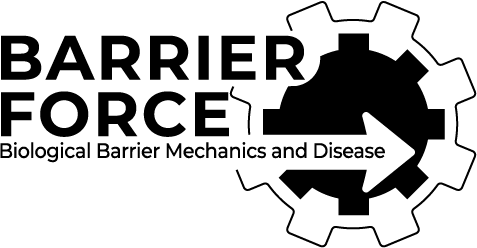The eukaryotic guided entry of tail-anchored proteins (GET) pathway mediates the biogenesis of tail-anchored (TA) membrane proteins at the endoplasmic reticulum. In the cytosol, the Get3 chaperone captures the TA protein substrate and delivers it to the Get1/Get2 membrane protein complex (GET insertase), which then inserts the substrate via a…
Teams publications
Zika virus prM protein contains cholesterol binding motifs required for virus entry and assembly
For successful infection of host cells and virion production, enveloped viruses, including Zika virus (ZIKV), extensively rely on cellular lipids. However, how virus protein-lipid interactions contribute to the viral life cycle remains unclear. Here, we employ a chemo-proteomics approach with a bifunctional cholesterol probe and show that cholesterol is closely…
Dynamic Micropatterning Reveals Substrate-Dependent Differences in the Geometric Control of Cell Polarization and Migration
Cells are highly dynamic and adopt variable shapes and sizes. These variations are biologically important but challenging to investigate in a spatiotemporally controlled manner. Micropatterning, confining cells on microfabricated substrates with defined geometries and molecular compositions, is a powerful tool for controlling cell shape and interactions. However, conventional binary micropatterns…
The possible dual role of Ang-2 in the prognosis of pancreatic cancer
Pancreatic ductal adenocarcinoma (PDAC) features a dense desmoplastic stroma, which raises the intratumoral interstitial pressure leading to vascular collapse and hypoxia, inducing angiogenesis. Vascular growth factors, such as vascular endothelial growth factor (VEGF) and angiopoietin-2 (Ang-2), increase in PDAC. A high VEGF and a high circulating Ang-2 associate with shorter…
Single particle tracking reveals SARS-CoV-2 regulating and utilizing dynamic filopodia for viral invasion
Although severe acute respiratory syndrome coronavirus 2 (SARS-CoV-2) entry mechanism has been explored, little is known about how SARS-CoV-2 regulates the subcellular structural remodeling to invade multiple organs and cell types. Here, we unveil how SARS-CoV-2 boosts and utilizes filopodia to enter the target cells by real-time imaging. Using SARS-CoV-2…
How Neuromembrane Lipids Modulate Membrane Proteins: Insights from G-Protein-Coupled Receptors (GPCRs) and Receptor Tyrosine Kinases (RTKs)
Lipids play a diverse and critical role in cellular processes in all tissues. The unique lipid composition of nerve membranes is particularly interesting because it contains, among other things, polyunsaturated lipids, such as docosahexaenoic acid, which the body only gets through the diet. The crucial role of lipids in neurological…
Ablation of integrin-mediated cell-collagen communication alleviates fibrosis
CONCLUSIONS: The data provide evidence for a crucial role of collagen-binding integrins in fibroblast force generation and differentiation in vitro and for matrix deposition and tissue remodelling in vivo. Targeting fibroblast-collagen interactions might represent a promising therapeutic approach to regulate connective tissue deposition in fibrotic diseases.
Psychedelics promote plasticity by directly binding to BDNF receptor TrkB
Psychedelics produce fast and persistent antidepressant effects and induce neuroplasticity resembling the effects of clinically approved antidepressants. We recently reported that pharmacologically diverse antidepressants, including fluoxetine and ketamine, act by binding to TrkB, the receptor for BDNF. Here we show that lysergic acid diethylamide (LSD) and psilocin directly bind to…
Polarity signaling balances epithelial contractility and mechanical resistance
Epithelia maintain a functional barrier during tissue turnover while facing varying mechanical stress. This maintenance requires both dynamic cell rearrangements driven by actomyosin-linked intercellular adherens junctions and ability to adapt to and resist extrinsic mechanical forces enabled by keratin filament-linked desmosomes. How these two systems crosstalk to coordinate cellular movement…
